For quite some time, I’ve been considering writing this post. I’ve hesitated due to the overwhelming affection people have for ficus trees (Ficus nitida). While the benefits of planting ficus trees are apparent. They have lush beauty and dense shade that are particularly valuable in desert environments. There are a few considerations to bear in mind before incorporating them into your landscape.
At first, the benefits of planting a Ficus tree are obvious. They are lush, beautiful and provide dense shade, which is sometimes scarce in the desert.
The Pros and Cons of Ficus Nitida Trees: What You Need to Know
So what’s the problem with having a Ficus tree? Well, there are a couple of things that you should be aware of before you plant a Ficus tree.
One of the primary challenges with Ficus trees is their vulnerability to frost damage. This is especially concerning in low desert regions when temperatures drop below freezing. This concern becomes even more pronounced during stretches of consecutive freezing days.
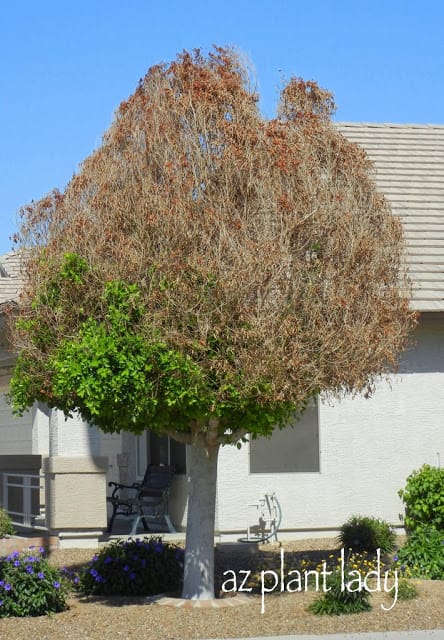
Photo: Frost-Damaged Ficus nitida
This past winter, we experienced a three-day period of temperatures in the low 20s. The impact on local Ficus trees was unmistakable. A mere drive through any neighborhood allowed me to distinguish, even from a distance, who had Ficus trees and who did not. The extensive presence of ‘brown’ trees gave it away.
After the return of warmer weather, many Ficus trees sported trimmed branches. This results in a shorter appearance due to frost damage mitigation (see image below).

Photo:Ficus tree that had frost damaged branches removed.
Growth Size and Control
The second challenge stems from insufficient research regarding the potential size of Ficus trees. Individuals often find themselves ill-prepared when the charming shade tree they planted rapidly becomes an overwhelming presence. Trees often seem to engulf their homes.
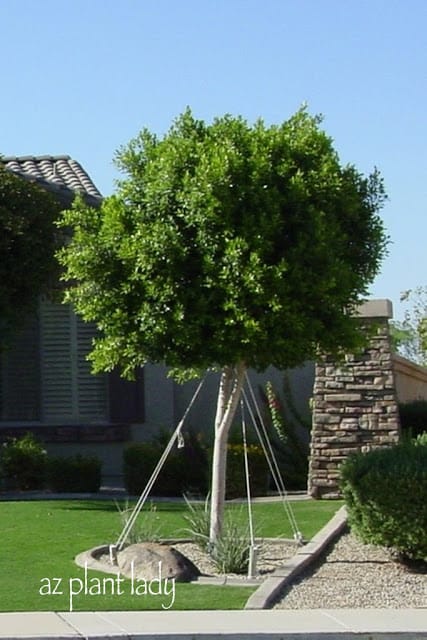
Photo: Young Ficus Tree
They are soon caught unprepared when the pretty, shade tree that they planted soon grows so large that it almost seems like it is ‘eating’ up the house….
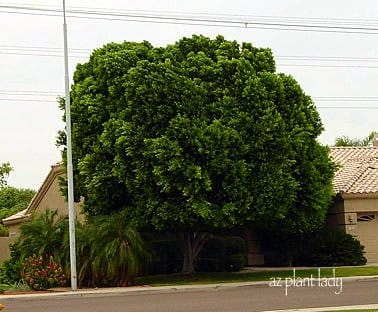
Photo: Mature Ficus Tree
What to Consider When Planting Ficus Trees
If your heart is set on having a Ficus tree grace your garden, go ahead and acquire one. Just remember that some winters might result in frost damage, temporarily affecting the tree’s appearance until new branches emerge. To ensure a successful experience with Ficus trees, keep the following points in mind:
- Proper Placement: Exercise caution when choosing a planting spot. Allow ample space for the tree to reach its mature dimensions without infringing on your house. Additionally, avoid planting near patios and pools, as the tree’s shallow roots can pose problems with insufficient watering. Ficus trees can attain heights of 30 to 50 feet and widths of 40 feet.
- Alternatives to Consider: While sissoo trees (Dalbergia sissoo) might appear to be an attractive alternative to Ficus, they also come with their own set of considerations.
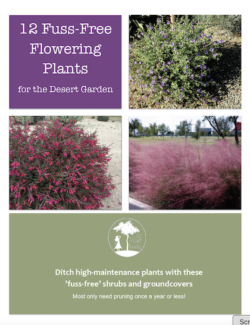
Sissoo Trees as an Alternative
Sissoo trees, resembling Ficus trees in appearance, exhibit greater frost tolerance. Despite their appealing features, it’s crucial to exercise caution when integrating sissoo trees into your landscape.
Some people look to sissoo trees as an alternative to ficus – BUT, this isn’t advisable either.
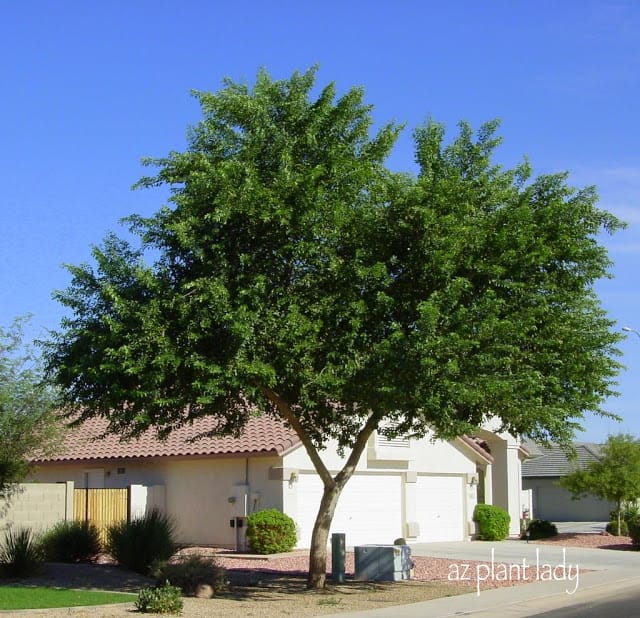
Photo: Sissoo Tree
The sissoo tree (Dalbergia sissoo) is similar in appearance to the ficus tree. They do however have greater tolerance to frost.
Like ficus trees, sissoo trees do grow quite large but I no longer recommend them for average size residential landscapes. The photo of the tree above was taken four years after it was planted from a 15-gallon container. It rapidly grew even larger. This tree made it’s debut in the Phoenix area about 15 years ago. It has become quite popular for its lush green beauty.
While sissoo trees flourish in larger outdoor areas such as parks due to their enhanced frost resilience, they present potential challenges for average-sized residential landscapes. Despite their initial popularity for their lush green beauty, their invasive root systems can wreak havoc on sidewalks, patios, pools, and block walls. Moreover, their eventual size can dwarf the landscapes they were intended to enhance.
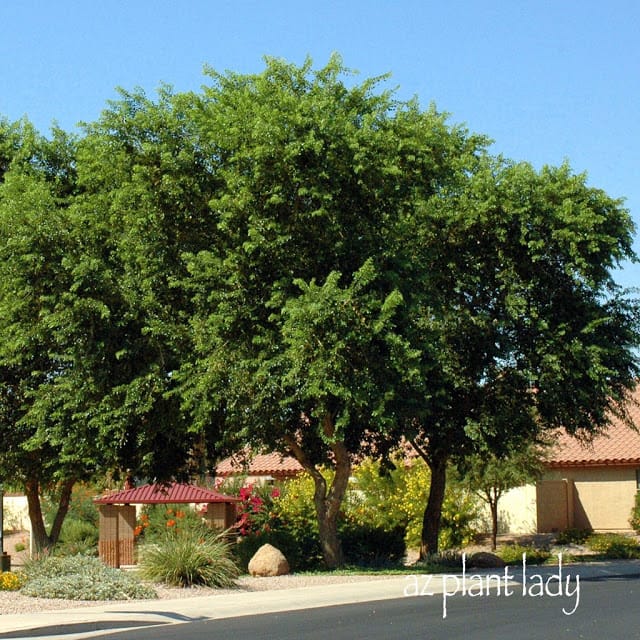
Photo: 3 Sissoo Trees
Careful Planning is the Best Approach for Ficus or Sissoo Tree Placement
The allure of Ficus nitida trees is undeniable, but careful planning and consideration are necessary to ensure a harmonious coexistence between these magnificent trees and your landscape. Understanding their susceptibility to frost damage and their potential for significant growth is vital for making informed decisions.
While sissoo trees can be a reasonable alternative, they too come with their own set of challenges that need to be weighed carefully. Ultimately, choosing the right tree for your outdoor space involves a blend of appreciation for aesthetics and awareness of practicality.











